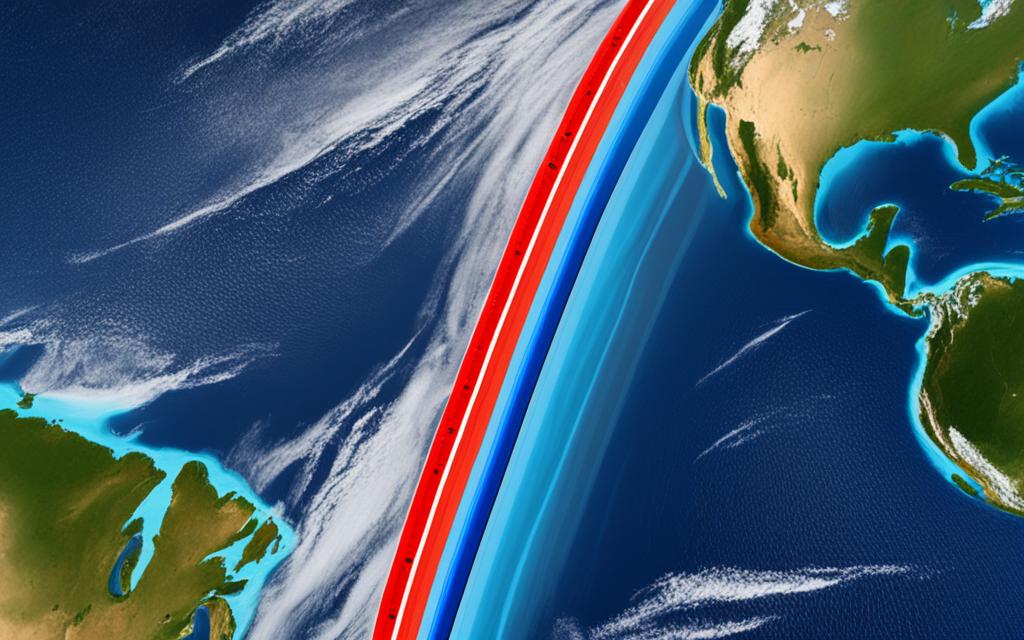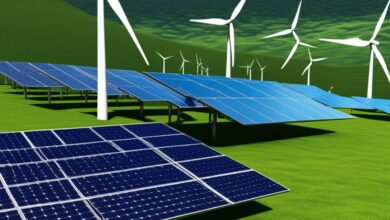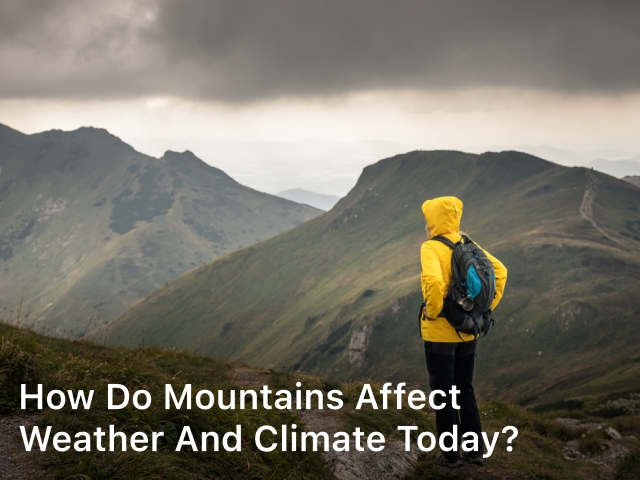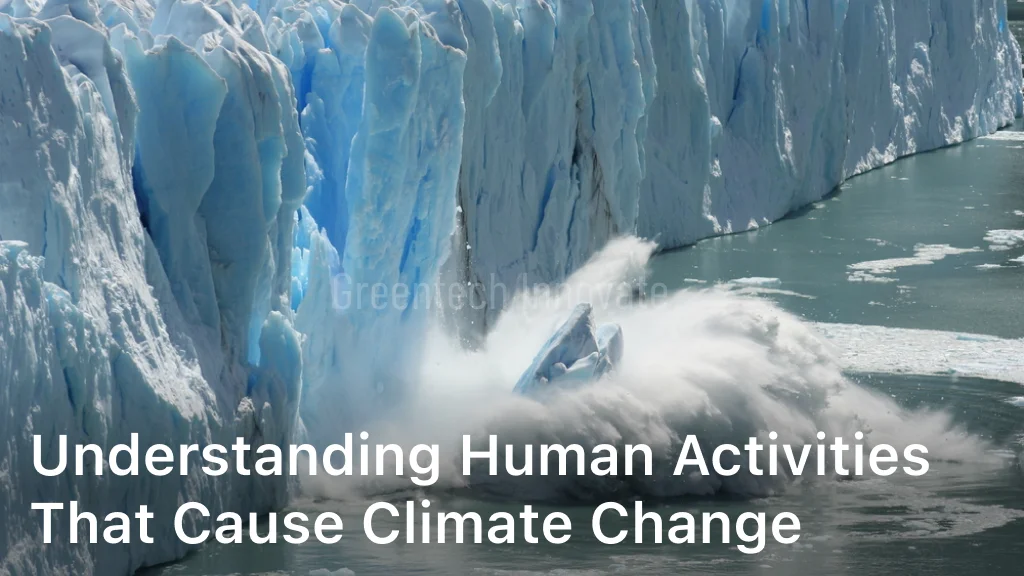
How Does Latitude Affect Climate? Climate is the long-term pattern of weather conditions in a certain place. Latitude is how far north or south from the equator a place is.
It plays a big role in the type of weather a region gets. Places near the equator get more sun all year, so they are usually warm. Areas farther away from the equator tend to have more changes in their seasons, with cooler and warmer times.
Knowing about latitude helps us understand why places have different climates. For example, it explains why deserts are hot and why the poles are always cold. By looking at latitude, we can predict what the weather might be like in different places. It also helps us plan where to live and how to deal with climate change.
Understanding Climate and Weather
Weather and climate are closely related aspects of our atmosphere. Weather changes from day to day. It includes things like temperature, rain, wind, and clouds. Climate is the average weather over many years in a certain place. It shows the general weather patterns of a region over decades.
Defining Weather and Climate
Weather can vary a lot, day after day. Climate is about the usual weather in a place over a long time. It is very important to know the difference. This helps us predict future weather, see how people affect the Earth, and prepare for climate change.
Importance of Climate Studies
Learning about climate helps us understand our planet. It helps make weather forecasts better and shows how we impact the Earth. Climate information is used to predict weather, monitor global temperatures and rain, and plan for climate change. This knowledge is also key for farming, travel, and energy planning. These fields need accurate weather and climate data to operate well.
Factors Influencing Climate
Climate is shaped by various factors. These factors lead to the special weather and environment in each region. Things like where a place is located, its height, and physical features all make a big difference.
Latitude and Angle of Sunlight
Latitude is crucial in determining a place’s climate. It decides how direct sunlight hits the Earth. Places near the equator get strong sunshine all year. This makes them warm and rainy. However, areas further north and south get weaker, indirect sunlight. This leads to colder weather. The way sunlight hits also affects how hot or rainy a place gets. This is what makes Earth’s various climate zones so diverse.
Elevation and Atmospheric Pressure
Elevation, or how high a place is, influences climate too. The higher up you go from sea level, the colder it gets. Every 1,000 feet you climb, the temperature drops about 3.5°F. This means mountain areas are cooler than lowlands, even if they are at the same latitude.
Geographic Features and Proximity to Water
The land’s features are key in determining what the weather will be like. Places near water enjoy stable temperatures throughout the year. This is because water can keep or release heat, balancing the air around it. Meanwhile, places away from coasts see bigger temperature changes. Special landforms like mountains and valleys also play a role. They create small areas with their own climate conditions.
Latitude and Temperature Variations
Going farther from the equator, the weather changes a lot. Each zone has its own temperature patterns. These patterns are all thanks to the location’s distance from the equator.
Equatorial and Tropical Climates
Places near the equator are very hot all year. They get direct sunlight all the time. This brings high temperatures and lots of rain. Areas right on the equator have warm weather all year. As you move away, the seasons become more distinct. It gets hotter during some parts of the year and rainy in others.
Temperate Climates
As we head further from the equator, seasons become more defined. Places in the temperate zone have hot, wet summers and cold, dry winters. The exact weather in these areas can change based on their location. But they all feel the seasons strongly, with changes in temperature and rain.
Polar and Arctic Climates
Closest to the North and South Poles are the coldest places, the polar and Arctic climates. These areas get very little sunlight. Because of this, they’re extremely cold. The winters are long and hard. Summers are short and cool. These places see little rain and are mostly frozen. So, life there is very tough.
How Does Latitude Affect Climate?
Latitude greatly impacts our planet’s weather patterns. It does so by changing the angle and strength of sunlight the Earth gets. Places near the equator get strong, direct sunlight almost all the time. This gives them warm weather and lots of rain. Farther away, towards the poles, the sunlight is weaker and not as direct. This makes those areas cooler and the weather more varied.
As we travel further from the equator, sunlight reaches us at a sharper angle. This makes the energy from the sun spread out more. So, places like the North and South Poles get much colder. Also, less energy from the sun means less rain. That’s why equatorial regions often see more rain because of the powerful, direct sunlight they get.
The role of latitude in shaping climate is vital. It helps us understand and predict weather. This knowledge is key for planning where and how we live. And it’s crucial in dealing with the effects of climate change. By learning about the link between latitude, sunlight, and weather, we can face challenges better. We can work on creating a more resilient world against the changing climate.
Climate Zones and Latitude
Earth’s climate is divided based on its latitude, creating different zones. Each zone has its own weather patterns. It’s key to understanding global weather.
Tropical Zone
The tropical zone sits between the Tropic of Cancer and the Tropic of Capricorn. It’s always hot with lots of rain. With direct sunlight, it gets hot year-round.
This area sees high temperatures and abundant rainfall, especially during monsoon season.
Subtropical Zones
Subtropical areas are between the tropics and the cooler places. They have warm, wet summers and cool, dry winters. These regions see more changes in weather.
How much rain they get varies, but they always have a wet and a dry season.
Temperate Zones
The temperate zones are between the sub-tropics and the cold, polar regions. They have four seasons. Summers are warm and winters are cold.
The weather changes a lot in these areas. They can get lots of rain, depending on where they are.
Polar Zones
The polar zones are at the very top and bottom of the Earth. They are always very cold. They get very little sunlight.
Thus, they have long, cold winters and short, cool summers. These places are dry, covered in ice, snow, and permafrost.

Effects of Earth’s Tilt and Seasons
Earth is tilted at an angle of 23.5 degrees. This tilt, along with its orbit around the Sun, changes the amount of sunlight different places get. The summer solstice is when one side of Earth faces the Sun the most. So, it gets more sunlight and warmth. On the other hand, the winter solstice is when the other side gets less sunlight, making it cooler. This is why we have different seasons.
Varying Insolation and Sun Angles
Because of Earth’s tilt and journey around the Sun, sunlight varies between seasons. Places close to the equator see little change in temperature all year. But, locations farther away experience big differences in summer and winter. These changes in warmth affect rain, wind, and nature a lot. They influence what humans and animals can do in different seasons.
Seasonal Temperature Changes
Earth’s tilt and orbit create different temperature seasons across the globe. This is more obvious in places far from the equator than near it. At the equator, temperatures pretty much stay the same all year. Yet, faraway regions can see their temperatures rise and fall a lot between summer and winter. This affects where and how people and wildlife live.
Altitude and Climate Variations
Aside from how far a place is from the equator, how high it is above the sea matters a lot too. The higher up we go, the less atmospheric pressure there is. This leads to cooler temperatures. For every 1,000 feet up (about 300 meters), it gets about 3.5°F (2°C) cooler. That’s why mountain areas are usually cooler than lowlands, even if they are in the same latitude.
Decreasing Temperature with Elevation
As we go higher up in the mountains, it gets colder. This is because the air pressure drops with elevation. Lower pressure means the air thins out, losing its ability to hold heat. So, mountain areas tend to be cooler because the air is thinner. This cooling effect is key in understanding mountain climates. It helps us forecast weather, plan outdoor adventures, and see how climate change could affect these areas.
Mountain Climate Zones
Mountains have their own climate zones because of changes in temperature and rainfall as you go up. Near the bottom, the climate might be warm. But as you climb, it can turn into a cold, frozen desert. The exact zones depend on how high the mountain is and where it is. This creates a variety of habitats, supporting many plants and animals.
Local Geography and Microclimates
Big bodies of water, like oceans, have a big impact on climate. Coastal areas have cooler summers and warmer winters because of the nearby water. But, inland places see bigger changes, getting hotter in summer and colder in winter. This is why places near water feel different from those farther away, with wind and clouds adding to the mix.
Mountains and valleys also make unique microclimates. The rain shadow is an example. It’s when one side of a mountain gets much less rain than the other. When air moves over a mountain, the wet side gets more rain due to orographic lift. This leaves the other side, the leeward side, much drier – creating a rain shadow effect.
| Coastal Climate | Inland Climate |
|---|---|
| More moderate temperatures | Extreme temperature variations |
| Cooler summers | Hotter summers |
| Warmer winters | Colder winters |
| Moderated by nearby ocean/lake | Influenced by wind patterns and cloud cover |
Impact on Human Lifestyles
The climate heavily influences how and where people live. Around the world, different groups have changed their way of life to fit their climate. For instance, those in hot places have found ways to stay cool. They use special building techniques and farm in unique ways. People in cold areas do the opposite, preparing for changing seasons. These adaptations show how we interact with our environment.
Adapting to Climatic Conditions
As humans move across the planet, they face many climate challenges. But, they also show great skill in overcoming these obstacles. From building the right kind of houses to farming differently, they adjust to their surroundings. Our ability to adapt helps civilization grow in various places. It’s key to our success in different environments.
Traditional Cultures and Climate
In many parts of the world, traditional cultures are deeply linked with the land and its weather. This is especially true for indigenous groups. They use their ancient knowledge to adapt their way of life. These groups show us how to live in harmony with the environment. Their practices are important, especially in the face of climate change.
Climate Change and Latitude Effects
The Earth’s climate is changing because of human activity. This leads to a shift in climate zones, moving them toward the poles. So, warm tropical areas are growing and cool zones are getting smaller. These changes can make some places less friendly for living or farming.
Global Warming and Shifting Climate Zones
Climate change affects the world differently. Places near the equator will feel hotter and see rising seas and severe storms. In contrast, cooler places might have more rain, lose ice, and see new plants and animals moving in. It’s important to understand these different risks to help protect people and the environment.
Potential Impacts on Different Latitudes
Climate zones are moving because of global warming. This is making places with warm climates spread further. Meanwhile, cooler areas are shrinking. The effects touch ecosystems, farming, and where we live. Some places may even become too harsh to support life.
Climate change varies around the globe. The tropics will get hotter and face more severe weather and rising seas. On the other hand, places like the poles will see more rain, lose ice, and have new species moving in. By knowing these risks, we can work on plans to stay safe and protect our planet.
Conclusion
Latitude shapes our planet’s weather in big ways. It affects temperature, rainfall, and more. Places near the equator get more sunlight, making it warm and rainy. But, areas further away have colder weather and different seasons. Elevation, water bodies, and the land’s shape also matter for local climate.
With global warming, understanding latitude and climate is key. This knowledge helps us guess future weather, and prepare for its impact. It’s important for making choices that help our planet’s health and our well-being.
To sum up, studying latitude is crucial to understand our world’s climate. We must keep learning to deal with climate change. This is how we look after our communities and the Earth.




